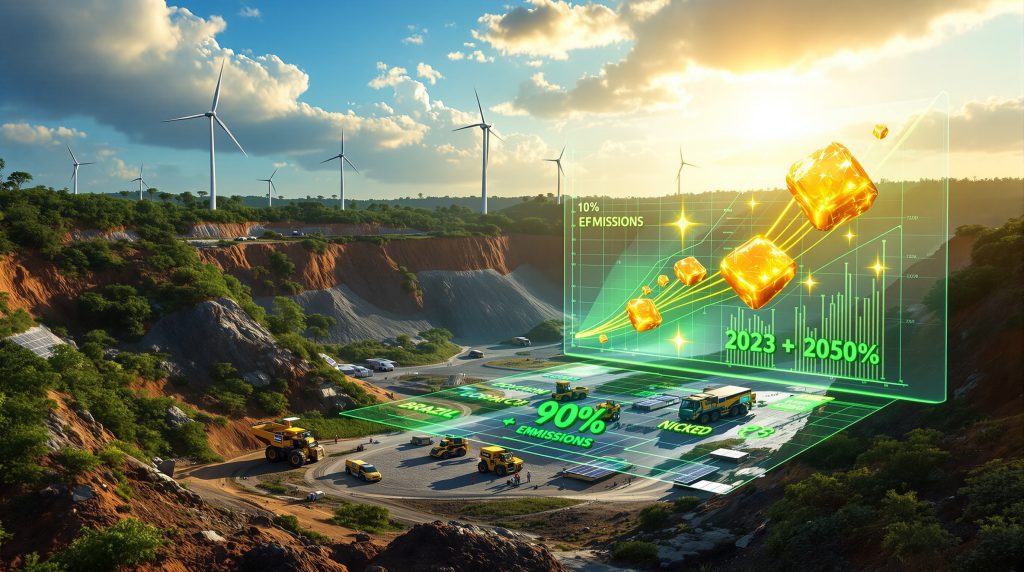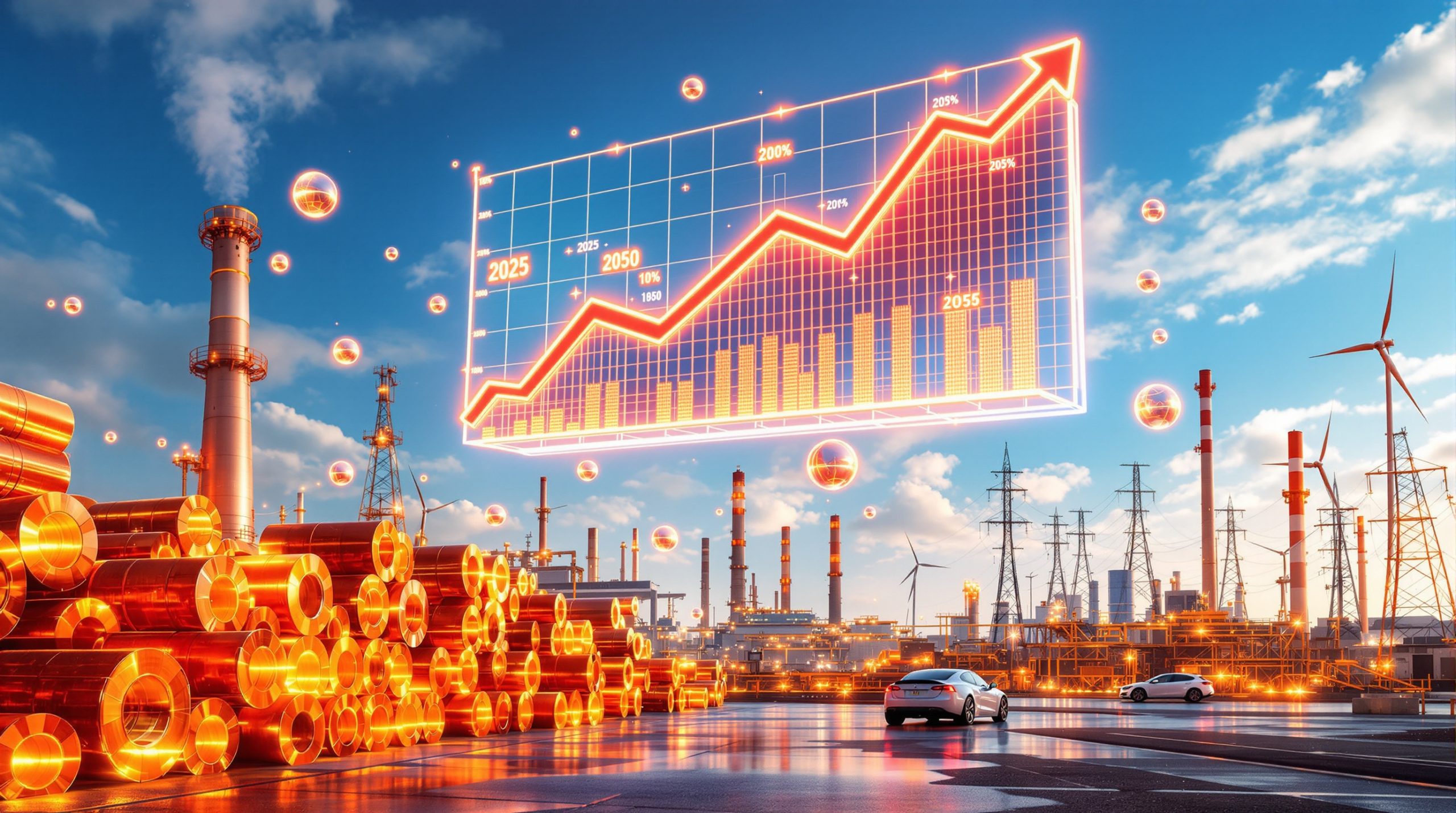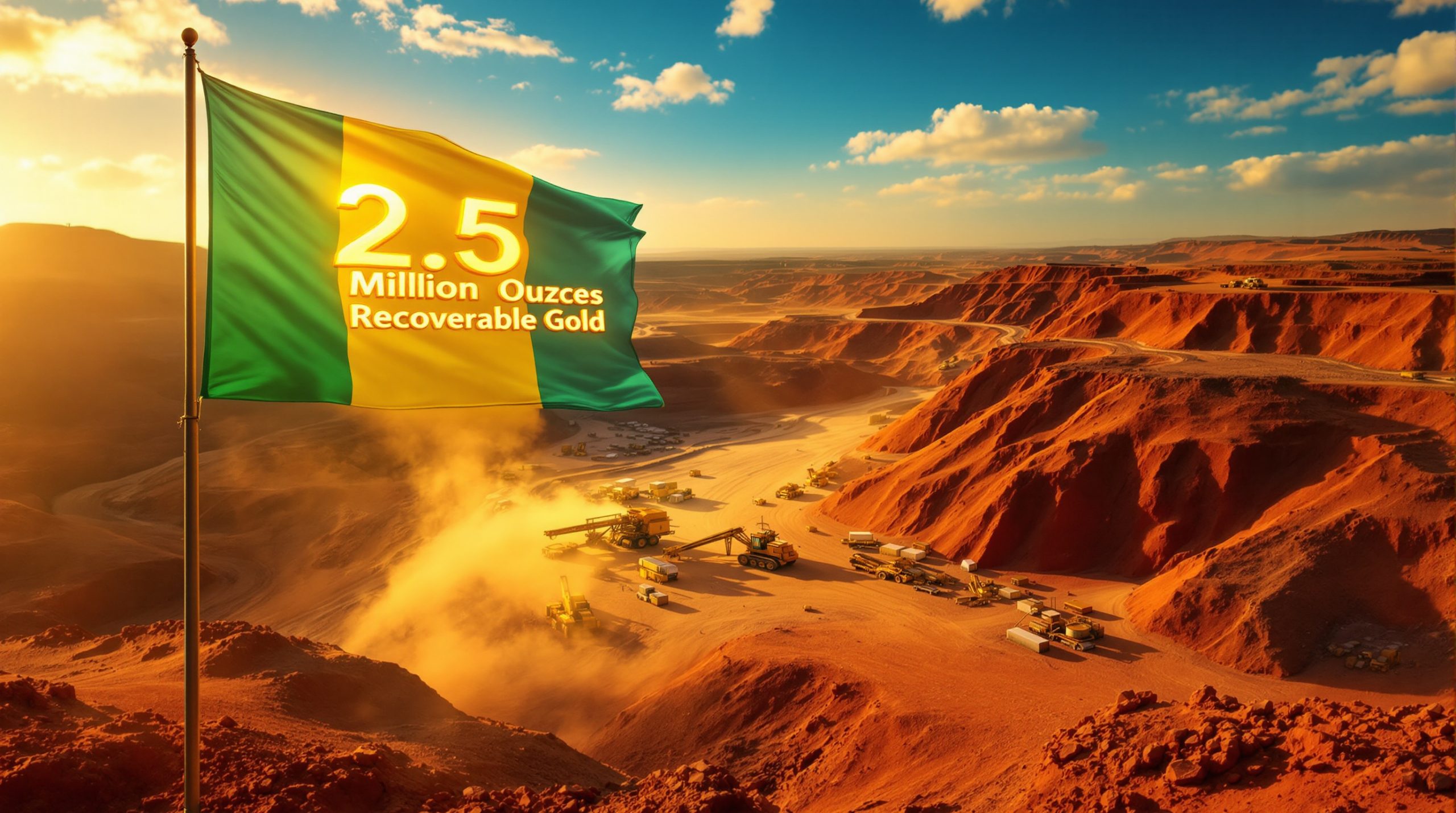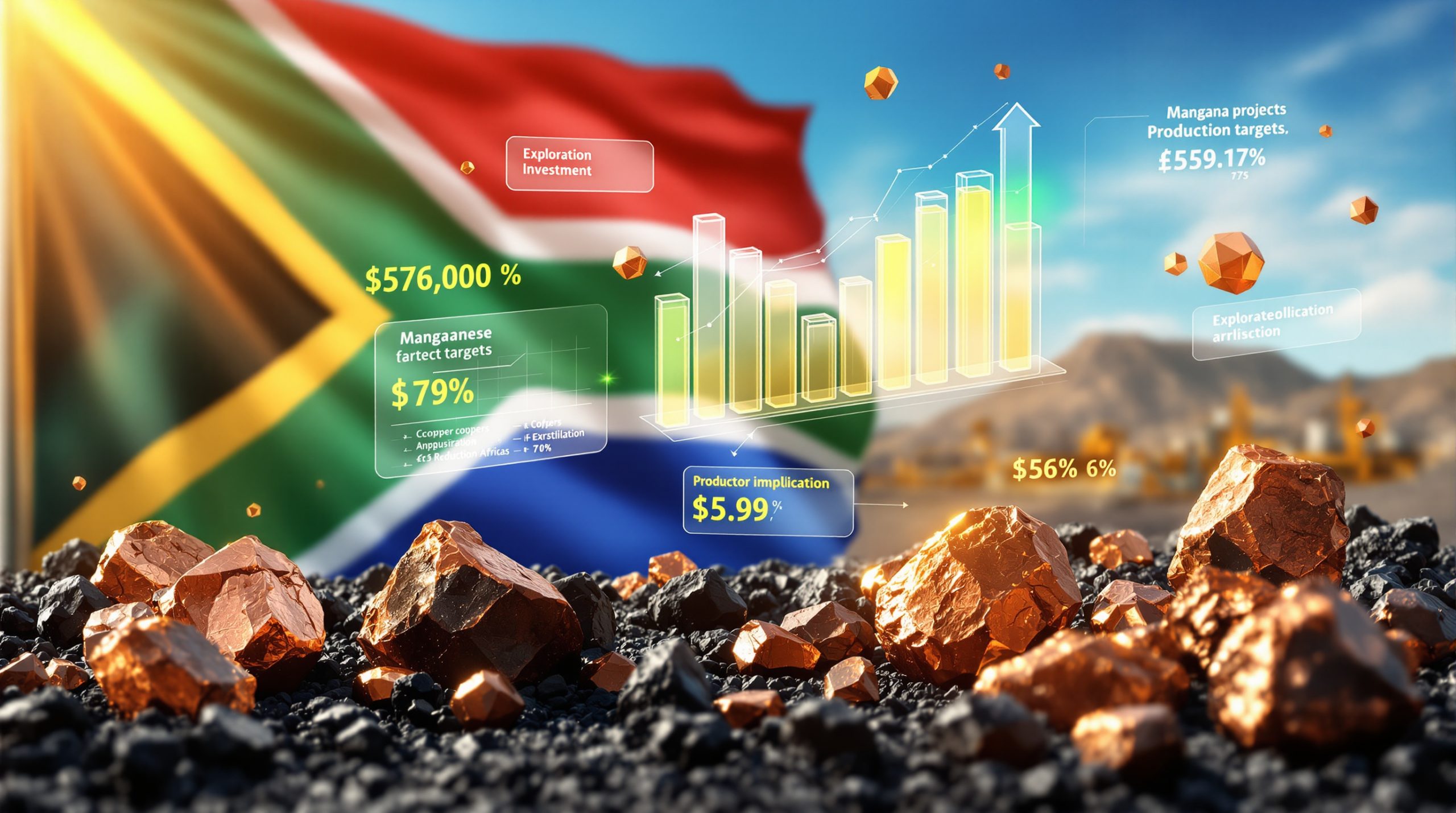Brazilian Mining Sector's Ambitious Decarbonization: Pathway to 90% Emissions Reduction by 2050
Brazil's mining industry has unveiled a groundbreaking decarbonization roadmap with the potential to slash carbon emissions by up to 90% by 2050. This comprehensive strategy, developed by the Essential Minerals Coalition, represents a unified approach from 15 key industry entities and companies. The initiative aims not only to dramatically reduce emissions within mining operations but also positions Brazil as a pivotal player in the global energy transition minerals landscape.
The Essential Minerals Coalition: Architects of Change
The coalition brings together industry leaders including the Brazilian Business Council for Sustainable Development (CEBDS), Vale, and the Brazilian Mining Institute (IBRAM). Formed at the invitation of the COP30 Presidency, this alliance represents a coordinated response from one of Brazil's most economically significant sectors ahead of the climate conference scheduled for November 2025 in Belém.
The coalition's formation reflects a paradigm shift in how mining is perceived in relation to climate action. As IBRAM President Raul Jungmann noted, the sector is evolving from being viewed primarily as an environmental challenge to being recognized as "an essential pillar of the solution to the climate crisis."
Brazil's Strategic Advantages in Sustainable Mining
Brazil enters this decarbonization journey with several distinct competitive advantages:
- One of the world's most diverse geological profiles, with abundant reserves of critical minerals
- A well-developed mining infrastructure with established expertise
- A predominantly renewable electricity matrix, providing a low-carbon foundation
- Strategic positioning in global mineral supply chains
- Established capacity for producing high-quality iron ore essential for green steelmaking
These natural and developed advantages position Brazil uniquely among mining nations to lead in sustainable transformation while supporting global climate goals.
What Are the Key Decarbonization Targets for Brazilian Mining?
The coalition has established a comprehensive approach to emissions reduction with specific, measurable targets designed to transform the sector by mid-century.
Emissions Reduction Timeline and Goals
| Timeframe | Reduction Target | Method |
|---|---|---|
| By 2050 | 80% | Direct emissions reduction |
| By 2050 | Additional 14% | Carbon neutralization activities |
| Total | ~90% | Combined reduction and neutralization |
These targets use 2022 as the baseline year for measuring emissions reductions, providing a clear reference point for tracking progress across the coming decades.
Five Core Emission Reduction Strategies
The roadmap identifies five primary decarbonization levers that, when implemented in concert, can achieve the ambitious 90% reduction target:
-
Energy Efficiency Improvements
- Optimizing operational processes to reduce energy intensity
- Implementing advanced energy management systems and monitoring
- Adopting best-available technologies to minimize energy waste
- Process optimization for grinding, crushing, and materials handling
-
Biofuel Adoption
- Transitioning heavy equipment from diesel to sustainable biofuels
- Leveraging Brazil's world-leading biofuel production capabilities
- Developing mining-specific biofuel applications for specialized equipment
- Creating closed-loop biofuel production systems at mining operations
-
Renewable Electricity Expansion
- Increasing on-site renewable generation (solar, wind, small hydro)
- Securing power purchase agreements for clean energy
- Developing dedicated renewable infrastructure for mining operations
- Building microgrids to ensure reliability while maintaining renewable sourcing
-
Fleet and Equipment Electrification
- Converting heavy machinery to electric alternatives
- Implementing battery-electric vehicles for transport
- Developing charging infrastructure at mining sites
- Exploring hydrogen fuel cell applications for specific use cases
-
Environmental Rehabilitation
- Restoring degraded mining areas through comprehensive revegetation
- Implementing carbon sequestration projects on mining lands
- Establishing biodiversity corridors and conservation areas
- Developing integrated landscape management approaches
Each of these levers represents a distinct technological and operational pathway, with varying implementation timelines and investment requirements. The integration of all five approaches provides flexibility and resilience in the decarbonization journey.
How Will Brazilian Mining Impact Global Decarbonization?
Beyond reducing its own carbon footprint, Brazil's mining sector has identified two significant pathways through which it can contribute to global decarbonization efforts: transforming the steel industry and scaling up production of energy transition minerals.
Contributions to Steel Industry Transformation
The coalition's analysis reveals potential for significant emissions reductions throughout the global iron ore value chain:
- Potential to reduce up to 110 million tons CO₂e annually by 2050
- Equivalent to eight times the annual emissions from Brazilian mining in 2022
- Focus on developing low-carbon steel inputs including high-quality pellets and briquettes
- Supporting direct reduction iron (DRI) production routes with dramatically lower carbon footprints
- Innovations in pelletizing, rail transport, and international shipping efficiency
Brazil's position as one of the world's largest high-quality iron ore producers gives it significant leverage in driving steel industry decarbonization. As Vale CEO Gustavo Pimenta emphasized, Brazil's high-quality iron ore is "essential for the decarbonization of steelmaking," highlighting the strategic importance of this resource in global climate efforts.
Energy Transition Minerals: Powering Global Change
The coalition projects that Brazil's mining sector can double production of critical minerals by 2050, supporting:
- Electric vehicle manufacturing (additional 38 million vehicles globally)
- Wind power expansion (additional 830 GW capacity worldwide)
- Solar power growth (additional 610 GW capacity globally)
- Grid infrastructure and energy storage systems development
This expanded production could contribute to reducing global emissions by up to 300 million tons CO₂e annually by 2050—equivalent to the combined emissions of São Paulo and Minas Gerais states in 2023.
The critical minerals identified include copper, nickel, bauxite, lithium, and rare earth elements, all essential components in clean energy technologies. Brazil's geological diversity provides significant reserves of these materials, positioning the country as a potential leader in supplying the raw materials needed for global electrification.
What Enablers Are Needed for Successful Implementation?
The coalition has identified five critical success factors that must be addressed to enable the full potential of the decarbonization roadmap.
Five Critical Success Factors
-
Regulatory and Economic Framework Improvements
- Implementation of effective carbon pricing mechanisms
- Streamlined permitting for low-carbon mining projects
- Development of mining-specific climate policy frameworks
- Incentives for sustainable mining practices and innovations
- Harmonization with international standards and reporting requirements
-
Technology Access and Development
- Investment in deployment of technically mature solutions
- Research partnerships for mining-specific decarbonization technologies
- Cost reduction pathways for emerging technologies
- Technology transfer programs and international collaboration
- Skills development and workforce training for new technologies
-
Infrastructure Enhancement
- Expanded logistics networks with sufficient capacity for critical minerals
- Energy transmission infrastructure development to connect renewable resources
- Material storage and processing facilities near mining operations
- Transportation decarbonization for mine-to-market supply chains
- Digital infrastructure to support advanced monitoring and optimization
-
Green Financial Instruments
- Sustainable finance taxonomies for mining projects
- Green bonds and sustainability-linked loans specifically for mining
- Climate risk assessment and disclosure standards
- Blended finance mechanisms for higher-risk technologies
- Long-term capital availability for decarbonization investments
-
Market Recognition and Incentives
- "Green premium" pricing for low-carbon mineral products
- Value chain incentives promoting circularity and resource efficiency
- Consumer and downstream industry engagement
- Certification and traceability systems for sustainably produced minerals
- International standards for embodied carbon in mineral products
These enablers require coordination across public policy, private investment, technology innovation, and market development. As IBRAM President Raul Jungmann noted, "We are ready to supply the minerals the world needs to build a low-carbon economy, but we cannot do it alone."
Why Is This Initiative Significant for Brazil and Global Climate Goals?
Strategic Positioning in the Energy Transition
Brazil's mining sector occupies a unique position to support global decarbonization efforts through:
- High-quality iron ore production essential for greener steelmaking
- Diverse reserves of critical minerals needed for clean technologies
- Established infrastructure and expertise in sustainable resource extraction
- Predominantly renewable electricity matrix providing low-carbon operations
- Strategic geographic positioning for global mineral supply chains
The initiative represents a fundamental reframing of mining's role in addressing climate change—from being viewed primarily as a source of emissions to being recognized as an essential enabler of low-carbon technologies.
Industry Leadership Perspectives
The initiative represents a significant commitment from industry leaders, reflecting a growing recognition of mining's dual role in climate action.
Marina Grossi, President of CEBDS, highlighted that the coalition symbolizes "the spirit of collective effort that COP30 inspires," bringing together companies, government, and civil society to build sectoral consensus and science-aligned solutions.
Gustavo Pimenta, CEO of Vale, emphasized that the private sector's engagement is essential for advancing Brazil's climate agenda, noting that Vale has positioned decarbonization as a central business pillar.
Raul Jungmann, President of IBRAM, stressed Brazil's unique competitive advantages in the mining sector, including geological diversity and a clean electricity matrix, positioning the country to supply essential minerals for a low-carbon economy.
How Does This Plan Align With Global Climate Commitments?
Integration With National and International Climate Frameworks
The mining sector's decarbonization roadmap represents a key component of Brazil's broader climate strategy as the country prepares to host COP30 in November 2025. The initiative aligns with several critical frameworks:
- Brazil's nationally determined contributions under the Paris Agreement
- The country's preparation for hosting COP30 in Belém
- Sectoral transformation initiatives requested by the COP30 Presidency across six key economic sectors
- Global net-zero transition pathways for hard-to-abate industries
The initiative is part of a coordinated approach covering six key sectors of the Brazilian economy: agriculture, energy, forestry, mining, livestock, and transportation, all of which were invited by the COP30 Presidency to develop decarbonization pathways.
Collaborative Implementation Approach
The success of this ambitious initiative depends on extensive collaboration:
- Public-private partnerships for infrastructure development
- Cross-sectoral collaboration on technology and innovation
- International cooperation on standards and best practices
- Financial sector engagement for sustainable investment
- Academic and research institution partnerships for technology development
- Civil society involvement in monitoring and accountability
This collaborative approach reflects the recognition that no single stakeholder group can achieve the necessary transformation alone.
What Are the Implementation Challenges and Solutions?
Achieving the 90% emissions reduction target will require overcoming significant challenges across multiple dimensions. The coalition has identified key barriers and potential solutions for each.
Overcoming Barriers to Transformation
| Challenge | Potential Solutions |
|---|---|
| High initial investment costs | Blended finance mechanisms, green bonds, transition finance instruments |
| Technology readiness gaps | R&D partnerships, pilot projects, technology transfer programs |
| Infrastructure limitations | Strategic infrastructure planning, public-private investments, regional development integration |
| Market acceptance of premium products | Value chain engagement, certification schemes, procurement policies |
| Policy uncertainty | Long-term regulatory frameworks, international alignment, industry-government dialogues |
Monitoring Progress and Ensuring Accountability
To ensure the roadmap's successful implementation, robust monitoring and accountability mechanisms will be essential:
- Establishment of transparent emissions tracking systems
- Regular reporting on decarbonization milestones and progress
- Independent verification of emissions reductions claims
- Stakeholder engagement throughout implementation
- Periodic reassessment of targets and strategies based on technology developments
These accountability measures will help maintain momentum and ensure the roadmap delivers on its ambitious goals.
What's Next for Brazil's Mining Decarbonization Journey?
The roadmap outlines a phased implementation approach spanning the next three decades, with distinct priorities for each period.
Short-Term Priorities (2025-2030)
- Detailed implementation planning for each decarbonization lever
- Early investments in energy efficiency and renewable energy
- Development of sector-specific carbon accounting methodologies
- Pilot projects for emerging technologies like green hydrogen
- Capacity building and workforce transition planning
- Stakeholder engagement and coalition building
Medium-Term Focus (2030-2040)
- Scaling up successful pilot technologies
- Major infrastructure investments for electrification
- Expanded production of energy transition minerals
- Integration of circular economy principles throughout operations
- International partnerships for technology deployment
- Development of specialized green financial instruments
Long-Term Vision (2040-2050)
- Full deployment of zero-emission mining technologies
- Comprehensive value chain decarbonization
- Leadership in sustainable mining practices
- Carbon neutrality for residual emissions
- Integration with broader net-zero economy
- Setting new standards for global mining industry evolution
This phased approach recognizes that transformation will not happen overnight but requires strategic, coordinated action over decades.
FAQ: Brazilian Mining Sector Decarbonization
What specific minerals will be crucial for the energy transition?
Brazil's mining sector will focus on expanding production of several critical minerals including copper, nickel, bauxite, lithium, and rare earth elements. These materials are essential components in electric vehicle batteries, wind turbines, solar panels, and electricity transmission infrastructure. Brazil's geological diversity provides significant advantages in developing these resources sustainably.
How will the decarbonization plan affect mining communities?
The transition to low-carbon mining operations will create new job opportunities in renewable energy, technology deployment, and environmental restoration. The plan emphasizes the importance of just transition principles to ensure mining communities benefit from the transformation through skills development, economic diversification, and improved environmental conditions.
What role will technology play in achieving these ambitious targets?
Technological innovation is central to the decarbonization roadmap. Key technologies include battery-electric mining equipment, renewable energy systems, digital optimization tools, advanced materials processing, and carbon capture solutions. The plan emphasizes both deploying mature technologies and investing in emerging solutions through research partnerships and pilot projects.
How does this initiative compare to mining decarbonization efforts in other countries?
Brazil's approach stands out for its comprehensive scope covering both direct emissions reduction and enabling the broader energy transition. The country's renewable electricity advantage provides a strong foundation compared to mining regions more dependent on fossil fuels. The initiative also emphasizes Brazil's potential contribution to global steel decarbonization, which distinguishes it from plans focused solely on operational emissions.
Brazil's Mining Sector as a Climate Solution Partner
The Brazilian mining sector's decarbonization roadmap represents a paradigm shift from viewing mining as primarily an environmental challenge to recognizing its essential role in enabling the global energy transition. By simultaneously reducing its own emissions and scaling up production of critical minerals, Brazil's mining industry is positioning itself as a key partner in addressing climate change.
The success of this ambitious plan will depend on effective collaboration between industry, government, financial institutions, and civil society. With the right enablers in place, Brazil has the potential to demonstrate how a resource-rich nation can leverage its natural advantages to lead in green metals leadership.
The mining sector's transformation aligns with Brazil's broader sustainable development goals, combining environmental protection, economic opportunity, and social progress. As the world accelerates its shift toward renewable energy and electrification, Brazil's mining sector aims to be at the forefront of providing the essential minerals that will power a cleaner future.
Disclaimer
This article contains forward-looking statements about Brazilian mining sector decarbonization. These projections are based on current plans and assumptions that may change as technologies, policies, and market conditions evolve. Readers should consider these forecasts as possibilities rather than guarantees, as the achievement of these targets depends on multiple factors beyond the control of any single organization or sector.
Want to Spot the Next Major Mineral Discovery Before the Market Does?
Stay ahead of the curve with Discovery Alert's proprietary Discovery IQ model, which delivers real-time notifications on significant ASX mineral discoveries, turning complex data into actionable investment insights. Explore why major discoveries like those from Brazil's mining sector can lead to substantial returns by visiting Discovery Alert's dedicated discoveries page.




